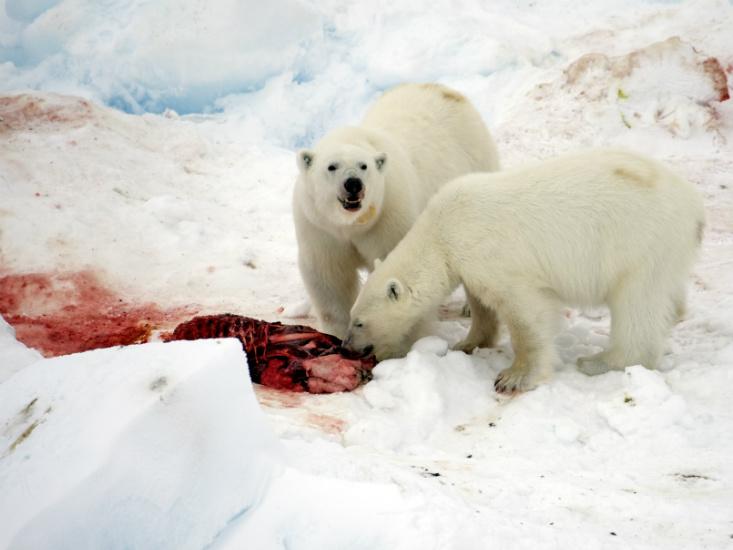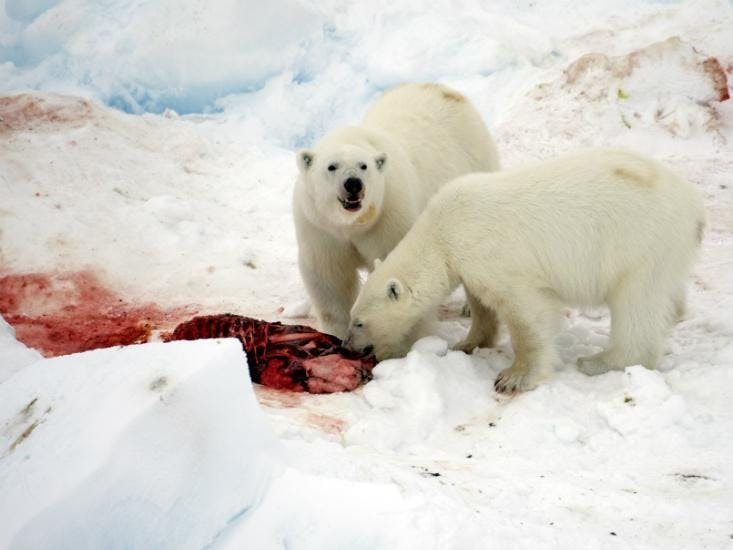
When environmentalists petitioned to designate the polar bear a threatened animal under the Endangered Species Act in 2005, they were not, in fact, out to save the polar bear. They were out to save the world. Since the polar bear’s icy habitat was threatened by rising temperatures, they reasoned, the government would have to regulate greenhouse emissions on behalf of the protected species. A clever or devious twist on the Endangered Species Act, depending on your view.
Such tactics were necessary because Congress and federal regulators had shown, and continue to show, little inclination to get it done otherwise. Just last week, the UN’s Intergovernmental Panel on Climate Change (IPCC) released the first part of its fifth big report in 23 years, gathering the strongest case ever for humans causing climate change. This report is as methodical and understated as you’d expect from a group of bureaucratic scientists, and it’s expected to have no more effect on a preoccupied Congress than the previous ones did. But polar bears—they’re harder to ignore. “No politician wants to tell their kids, tell their constituency, ‘Yes, I voted to kill the polar bear,” said a lawyer at the Center for Biological Diversity, an advocacy group, at the time of the petition.
The polar bear was a very deliberate choice in this fight. While scientific evidence for the bear’s threatened status was not as overwhelming as, say, for the Kittlitz’s murrelet, who even knew what that was? (Hint: It’s a bird.) The lonely polar bear on a melting ice floe, on the other hand, was an image easily evoked. Even if few Americans would ever meet a live polar bear, the creature carried more weight than its usual 1,000 pounds in the public imagination.
Charismatic megafauna (the biologist’s term for “big, cute animals”) like the polar bear have long done the heavy lifting for conservation movements. The World Wildlife Fund’s instantly recognizable logo is a panda. Bald eagles—the most symbolically American animal of all—is the snowy-white face of the anti-DDT campaign’s success. After the pesticide that made the bird’s eggs too fragile to hatch was banned, the raptor recovered from a low of fewer than 500 nesting pairs to being taken off the endangered or threatened species list in 2007.
The Endangered Species Act that passed in 1973 was intended by Congress as a largely symbolic effort to protect such charismatic megafauna. “After its passage, there was instantly a lot of buyer’s remorse,” writes journalist Jon Mooallem in his book Wild Ones. Idealism took over the system. The Smithsonian Institution submitted 3,187 plants to the list. A protected fish held up a construction of a dam in Tennessee. Our collective goodwill toward pandas and bald eagles has translated to legal protection for organisms we’ve never heard of, like the snail darter and showy stickseed.
When environmentalists submitted their polar bear petition, the Bush administration was no mood to grant more power to the Endangered Species Act. Several years of lawsuits and an investigation ensued. In May 2008, the Department of the Interior finally announced it would list polar bears a threatened species. The listing came with special rule, though: The Endangered Species Act could not be used to regulate greenhouse emissions, which the interior secretary called “wholly inappropriate.” There is no way to directly link, the administration argued, emissions from a specific factory in the US to a polar bear dying in the Arctic. And so a strategy that worked for species threatened by a single dam or chemical failed for a problem as systemic as climate change.
The polar bear campaign didn’t work as a legal strategy, but what about among the public? Telling someone that his children will never live to see a polar bear that he himself has likely never seen may produce a momentary twinge of sadness. But it makes the effects of climate change feel far off and remote. In fact, climate change perturbs our normal lives, possibly in a form as direct as extreme weather events we’ve seen recently. It’s not just polar bears who won’t fare well with climate change.
Sarah Zhang is a science journalist based in Washington, DC. Follow her on Twitter @sarahzhang.



